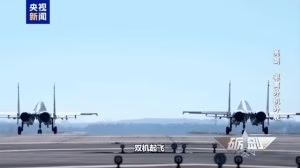Colombian Navy captures unmanned narco submarine in Caribbean Sea

On July 2, 2025, the Colombian Navy announced the seizure of an autonomous underwater vehicle / unmanned narco submarine as part of a press release regarding the Orion Multinational Strategy, a global initiative led by Colombia to combat drug trafficking and related transnational crimes.
The incident marked the first known use of unmanned underwater vessels in drug trafficking. According to the Colombian Navy, the discovery of the autonomous semi-submersible highlights a shift toward more advanced and sophisticated smuggling technologies. These systems enhance the ability of criminal networks to evade detection, posing an increasing threat to international maritime security.
“This demonstrates an evolution in the logistical capabilities of drug trafficking, which seeks to surpass traditional approaches through innovation and highly adaptive means.” said Admiral Juan Ricardo Rozo, Chief of the Colombian Navy in the press release.
The unmanned vessel appears to have been designed for remote operation (autonomous or semi-autonomous). The image shared by the Colombian Navy suggest that it is fitted with a Starlink antenna on the bow. Open-source information indicates that it has the capacity to transport up to 1.5 tons of cocaine.
Manufactured in Colombia, these rudimentary and lightweight vessels operate at waterline level, allowing them to travel longer distances than conventional speedboats while remaining difficult for authorities to detect and track.
“Narco-submarines are not truly submersible”

Speaking to Naval News, H. I. Sutton, an experienced OSINT analyst and regular Naval News contributor, stated that like almost all so-called ‘narco submarines’ this vessel is not truly submersible. “It runs low in the water with just the air inlets and communications antenna above water.” he said. “This will make it very difficult to detect, although no more so than the crewed equivalent. Therefore the shift to uncrewed operations isn’t driven by increased stealth.“
Previous uncrewed “narco-submarines” have typically been smaller in size and used for shorter routes. They have been detected in the Mediterranean Sea, transporting cannabis from Albania to Italy and from Morocco to Spain. This incident marks the first recorded discovery of such a vessel in Latin America.
Sutton also underlined that use of unmanned submersibles for drug trafficking has some risck for the smugglers as well. “The challenge for the narcotics smugglers will be keeping the engine running. There is no crew aboard to fix it if it breaks down. This will however be baked into the risk-benefit calculations.” he added.
Sutton also mentioned that the use of Starlinkfor high-data two-way satellite communications will be key to the viability of uncrewed narco-submarines.
Author’s opinion
Unmanned systems are known to offer significant advantages across both military and civilian applications. In military contexts, removing the human element from operations eliminates the risk of personnel casualties, enabling decision-makers to pursue more ambitious and risk-tolerant strategies. In recent decades, unmanned aerial vehicles (UAVs) have been widely deployed on the battlefield. However, the emergence of unmanned surface vessels (USVs), particularly their game-changing impact in the Russia–Ukraine war, has triggered a paradigm shift in naval warfare. While unmanned underwater vehicles (UUVs) have primarily been used in underwater surveys, sampling, and mine countermeasure operations, the technology remains in active development.
Beyond their operational benefits, the proliferation of unmanned systems presents serious concerns, the risk of these technologies falling into the hands of terrorist organizations or armed groups. The increasing use of kamikaze drones by various terrorist entities has validated these concerns. Given the relatively low cost of production and the high cost of countering such systems, both technological innovation and the development of new concepts of operations (CONOPS) remain ongoing efforts to mitigate this asymmetric threat.
In this context, the use of unmanned underwater vehicles for drug trafficking marks a new and alarming development. The fact that criminal organizations have acquired this technology raises the possibility that terrorist groups may also have access to it. Detecting threats underwater is significantly more complex and costly than detecting threats on the surface or in the air.
As such, preventing the transport of narcotics or other contraband, and more critically, averting potential terrorist attacks using these platforms has underscored the growing importance of deploying fixed hydrophone detection systems around key naval bases and critical maritime infrastructure. This incident confirms that the threat is no longer theoretical, and future analyses and security strategies must take this evolving risk into account.










